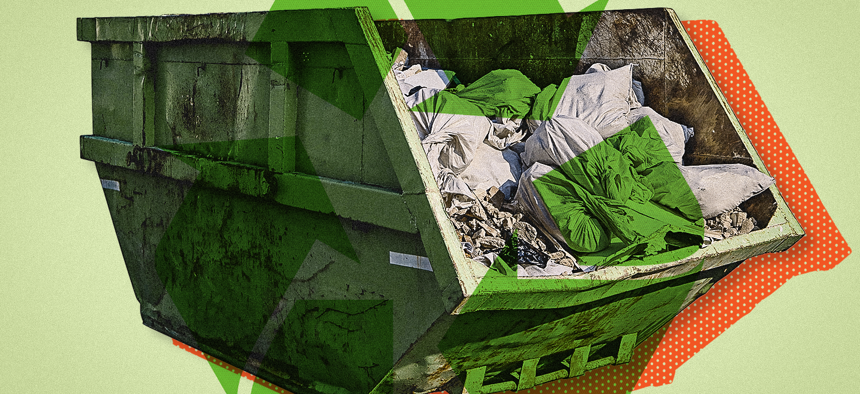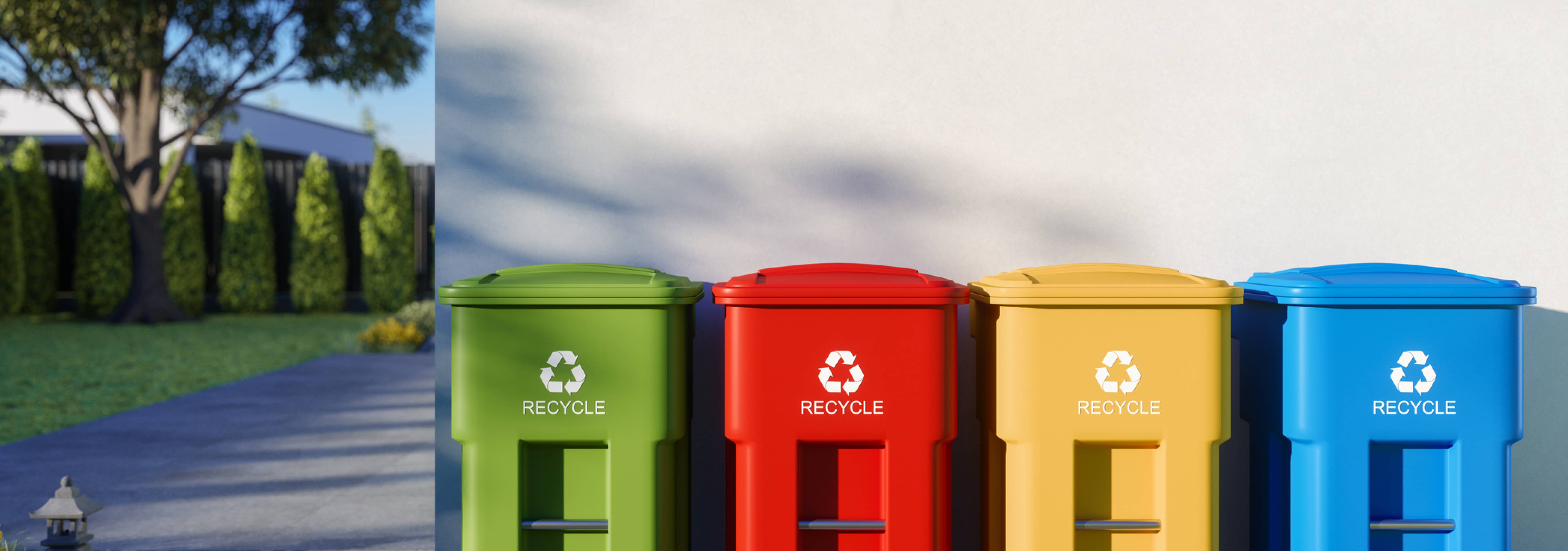Obtain Included with Recycling Lives Services for a Greener Future
Obtain Included with Recycling Lives Services for a Greener Future
Blog Article
Checking Out Different Kinds of Waste in Modern Waste Administration Equipment
The contemporary landscape of waste monitoring entails browsing a complex selection of waste types, each calling for specialized handling and disposal techniques to alleviate environmental influences. Local strong waste, hazardous waste, electronic waste, and organic waste each existing distinct challenges and possibilities for resource recovery.
Metropolitan Solid Waste
Community strong waste, typically referred to as home trash or rubbish, incorporates a selection of discarded materials created by domestic, commercial, and institutional resources within a community. This waste stream generally includes things such as packaging, food scraps, yard trimmings, paper, plastics, fabrics, and thrown out house items. The monitoring of community solid waste is an essential element of metropolitan preparation and public health, demanding effective collection, transport, and disposal systems.
Efficient waste monitoring systems are made to minimize ecological influence while maximizing resource recovery. Composting organic waste, such as food scraps and lawn trimmings, not only minimizes landfill use yet also produces important soil changes.
Districts should additionally attend to the financial and logistical difficulties linked with waste administration. Executing pay-as-you-throw systems, improving public awareness, and spending in technology can considerably improve waste diversion rates. By incorporating these techniques, districts can cultivate lasting areas, minimize greenhouse gas discharges, and save natural sources.
Hazardous Waste

Reliable unsafe waste monitoring involves several vital steps: identification, segregation, disposal, and therapy. Identification requires the category of waste based upon its hazardous buildings. Partition makes certain that hazardous products are kept separately from non-hazardous waste to avoid cross-contamination. Therapy techniques, such as chemical neutralization, incineration, and stablizing, are utilized to lower the toxicity, volume, or movement of the waste. Disposal options, including safe and secure land fills and below ground storage space, are picked to ensure lasting control.
Regulatory frameworks, such as the Source Preservation and Recovery Act (RCRA) in the USA, supply guidelines and standards for unsafe waste management. Adherence to these regulations, coupled with advancements in waste therapy innovations, is important in mitigating the dangers linked with contaminated materials.
Electronic Waste
Digital waste, generally described as e-waste, represents a rapidly expanding challenge in waste monitoring systems around the world. This kind of waste encompasses discarded electronic devices and tools such as smartphones, computer systems, televisions, and various other electronic appliances. The fast speed of technical development, paired with reducing item life expectancies and customer demand for the latest tools, has actually significantly increased the quantity of e-waste generated each year.
E-waste is specifically bothersome as a result of its complicated make-up, typically having unsafe compounds like cadmium, lead, and mercury, which posture significant environmental and wellness threats if not appropriately taken care of. Conversely, e-waste likewise has useful materials such as gold, copper, and silver, which can be recuperated and recycled. The double nature of e-waste-- both beneficial and hazardous-- necessitates specialized handling, reusing, and disposal procedures.
Reliable e-waste management involves stringent governing frameworks, durable collection systems, and advanced reusing technologies. Public recognition and participation are crucial, as improper disposal methods, such as prohibited disposing and casual recycling, intensify ecological contamination and health and wellness threats. Enhancing e-waste monitoring practices is essential for reducing environmental influence and recovering useful sources in a progressively digital world.

Organic Waste
Organic waste, consisting of kitchen area scraps, backyard trimmings, and agricultural deposits, represents a substantial part of the global waste stream. This kind of waste is eco-friendly, suggesting it can be damaged down by bacteria right into easier natural substances. In spite of its capacity for natural decay, inappropriate administration of natural waste can lead to negative ecological effects, consisting of the emission of greenhouse gases such as methane, which contribute to environment modification.
Reliable management of organic waste is crucial for lessening these environmental effects (recycling lives services). Composting is an extensively embraced method, changing organic waste into nutrient-rich compost that can enhance dirt wellness and agricultural productivity. In addition, anaerobic digestion is an arising innovation that converts organic waste right into biogas, a renewable resource source, and digestate, which can be used as plant food
Municipalities and waste management entities must execute durable natural waste collection and treatment programs to take full advantage of the benefits of these processes. Public education and learning campaigns can likewise play a critical duty in motivating households and services to separate organic waste from various other kinds of waste. my latest blog post By prioritizing the monitoring of organic waste, cultures can lower land fill use, reduced greenhouse gas discharges, and create useful results for farming use.

Innovative Waste Management
In the world of waste administration, innovative techniques are changing just how societies handle their refuse, aiming for sustainability and performance. One prominent advancement is the application of clever waste containers furnished with sensors that monitor fill levels and maximize collection courses.
An additional remarkable development is the adoption of waste-to-energy (WtE) technologies. By converting non-recyclable waste into functional power via processes such as incineration and anaerobic food digestion, WtE decreases landfill worry and provides a sustainable energy source. Additionally, innovations in chemical recycling permit the breakdown of complex plastics right into their initial monomers, enabling the development of brand-new, top quality plastic items.
Furthermore, the circular economy model is gaining grip, emphasizing the design of items and systems that focus on reusability and resource performance. This alternative strategy encourages sectors to minimize waste generation from the beginning. With these innovative methods, contemporary waste administration systems are not only attending to the instant challenges of garbage disposal yet additionally leading the way for a more sustainable future.
Verdict
An extensive understanding of municipal solid waste, contaminated materials, electronic waste, and organic waste, combined with the execution of innovative waste monitoring services, is essential for mitigating ecological impacts. Incorporating innovations such as wise waste bins and waste-to-energy systems can enhance efficiency and sustainability. Efficient waste management techniques not just foster resource recovery yet additionally advertise public recognition and engagement, inevitably adding to the growth of a circular economy.
The modern landscape of waste monitoring involves browsing a complex array of waste kinds, each calling for specialized handling and disposal methods to click site mitigate environmental effects. Municipal solid waste, dangerous waste, electronic waste, and organic waste each present unique obstacles and opportunities for resource healing.Digital waste, commonly referred to as e-waste, stands for a rapidly expanding difficulty in waste management systems globally. Via these cutting-edge techniques, modern-day waste management systems are not only addressing the instant difficulties of waste disposal but additionally have a peek here paving the method for an extra lasting future.
A detailed understanding of community solid waste, unsafe waste, digital waste, and natural waste, combined with the execution of ingenious waste administration remedies, is necessary for mitigating ecological effects. (recycling lives services)
Report this page